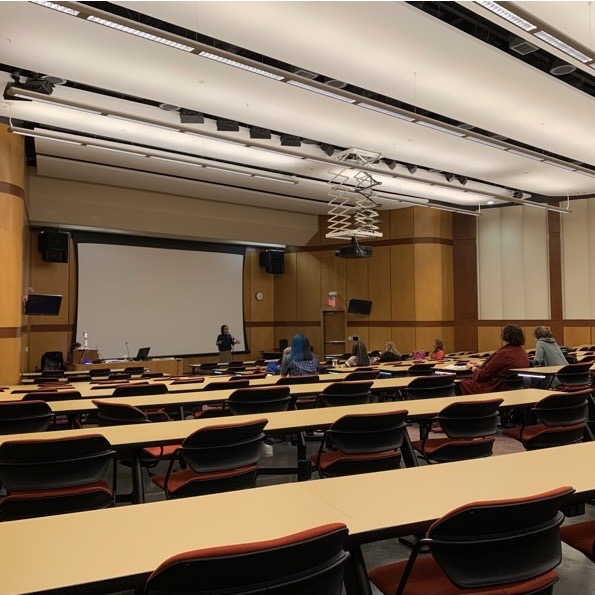Filmmaker focuses on the stories of Cambodian musicians

Dr. LinDa Saphan holds a Q&A session after the screening of her documentary “Don’t Think I’ve Forgotten: Cambodia’s Lost Rock and Roll.” (Nick Glover | Northern Star)
November 1, 2022
Saturday afternoon, the Center for Southeast Asian Studies put on a screening of Dr. LinDa Saphan’s documentary “Don’t Think I’ve Forgotten: Cambodia’s Lost Rock and Roll,” a film that focuses on the many stories of Cambodia’s biggest rock stars of the pre-Khmer Rouge era.
“Imagine, tomorrow, you’re not allowed to listen to Beyoncé anymore,” said Saphan, an associate professor of sociology at the College of Mount Saint Vincent. “Tomorrow, all this is gone.”
Saphan’s documentary details a situation of the same effect.
In the 1960s and 1970s, the Khmer Rouge, the Cambodian Communist Party, took over Cambodia. One of their major methods of silencing dissent was through suppressing, arresting and executing popular musicians.
One of the artists focused on is Sinn Sisamouth, one of the leaders of the Cambodian rock scene.
Sisamouth is the driving force behind Cambodian rock. He is known as one of the first to combine Cambodian folk and traditional music with Western rock and blues, and certainly the first to do so in the mainstream. The pre-Khmer Rouge Cambodian rock scene can be traced back to Sisamouth’s great contributions.
As the Khmer Rouge took over and citizens living in the Cambodian capital of Phnom Penh were forcibly evacuated by the Khmer Rouge, Sisamouth got lost in the mass of people leaving.
He was never seen again, and what happened to him has never been confirmed.
Throughout the documentary, Saphan and the rest of the team, such as director John Pirozzi and producer Andrew Pope, focus on stories similar to Sisamouth’s. These anecdotes emphasize the amount of artistic genius that was lost during the Khmer Rouge’s rule of Cambodia.
A few of the other musicians that were featured prominently in the documentary were Yol Aularong, Pen Ran and Pou Vannary, each of whom achieved stardom in Cambodia, according to the documentary.
One of the final scenes of the documentary shows each person interviewed for the film talking about how many people in their lives died at the hands of the Khmer Rouge.
For two to three minutes, these artists and those related to them talk about those that died because of the actions of the Khmer Rouge, sometimes 10 or 20 people, entire families, during the evacuation of Phnom Penh.
Saphan said she knows music can be a source of hope when authoritarianism takes over.
“Authoritarians are always like ‘Oh, you’re going to a labor camp’ and all these things, but if you could at least listen to music, it would give you hope,” Saphan said.
Saphan said she wanted the music of Cambodia to get out to the world.
“However the film is going to come out, we knew that we had great music,” Saphan said. “Anyone who loves music will understand.”
“I’m a fan of classic rock music,” said Court Hansen, a second-year history Ph.D. candidate. “I had listened to the soundtrack a bunch before I saw it, and it seemed like a good source for a music scene I didn’t know much about before.”
Hansen is not the only person who enjoyed the music featured in the documentary.
“I’m a big music lover,” said Alexis Cabrera, a junior illustration major. “I’ve been working on combining the music I’ve been listening to with what I’ve been studying with Southeast Asian Studies.”
For those interested in the documentary, it is free to watch on Pluto TV. The soundtrack of the film is available on Spotify.


